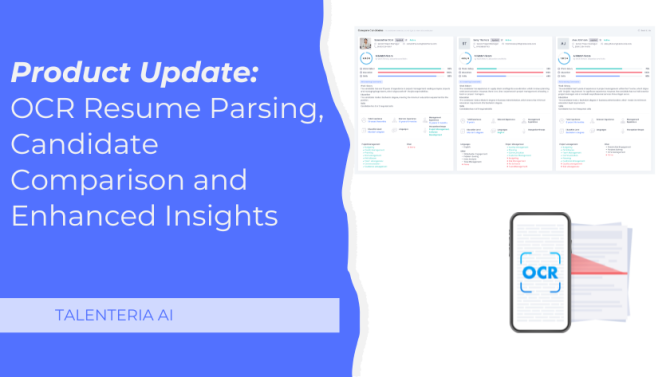
How to Calculate Cost per Hire
Every firm wrestles with the phantom of reducing costs to maintain or extend a profit margin. This is an elusive dragon to chase, as there are often not many activities whose budget can be slashed while retaining the firm’s proper functioning. However, the cost of recruiting new employees has forever been high, and it is the main reason why companies prefer retaining employees over letting them go.
In this article, we will take a close look at the cost per hire metric, how it is calculated, and what elements you need to consider to make the hiring process sustainable.
What Is Cost per Hire?
Cost per hire is an easy concept to understand. It is the mathematical mean of money you spend on hiring someone new. In other words, it is a measure of how much it costs a company to fill a position and includes such expenses as advertising for the vacancy, the cost of holding recruiting events, software fees, relocation fees, and administrative costs and benefits, among others.
As such, cost per hire is one of the most important metrics for determining talent analytics. When you know how much it costs you per new hire, you can decide where to invest your money. This allows you to not only save more but also attract better candidates by focusing your efforts on what matters.
How Do You Calculate Cost per Hire?
Now that we know the metric’s definition let us look at how to calculate cost per hire. Up until 2012, there was no fixed way to calculate it. Many different firms had their own methods of doing it, which, as you can imagine, was not conducive to clarity on the topic.
In 2012, various HR leaders, like the Society of Human Resource Management and the American National Standards Institute, came up with a universal formula which looks like this:
CPH = (Internal Recruiting Costs + External Recruiting Costs) Total number of hires
As you can see, the calculation of cost per hire consists of two steps. First, you add up all the costs related to filling a position. Then, you divide it by the total number of employees you hire.
What falls under internal and external recruiting costs? We will take a look in the next section!
What Should Be Included in Recruiting Costs?
Recruiting costs take on two different forms: internal and external.
Internal Costs
These costs are those that are related to staff expenditure and organizational costs of hiring. These include, but are not limited to:
- Recruiter salaries
- Employee referral bonuses
- Interview costs
- Infrastructure costs
- Learning and development costs incurred by your recruiting team
Note that internal costs per hire can include resource allocation between teams, even though the money stays inside the company. The salaries for recruiters and hiring managers do not have to be included in the calculation unless there is a specific reason, as this might make things more difficult.
External Costs
External costs refer to any costs incurred by external vendors or related out-of-office expenses. These might include:
- Fees for external agencies
- Job board posting fees
- Providers of aptitude tests
- Rent for assessment centers
- Drug testing and background checks
- Career fairs
- Relocation expenses
- Signing bonuses
- Recruitment software costs
Keep in mind that any costs accrued after the hiring of an employee, like training, do not count towards external costs.
Total Number of Employees
This is another essential part of the formula: understanding who counts as an employee. This can differ from company to company; however, as a rule of thumb, employees include those who:
- Underwent the hiring process while being lead by a hiring manager
- Were hired on a temporary but were promoted to full-time work
- Contracted workers whose term limit is more than a year and are on the company payroll
People not included in this number are:
- External workers like contractors and consultants
- Internal transfers
- New employees from mergers and acquisitions
- Employee’s on the payroll of a third party
What Is a Good Benchmark for Cost per Hire?
Now you know how to calculate the cost per hire. But how do you know whether the resulting metric is good or bad? High or low? You need something to compare it against, and in this section, we will look at a few industries and what their average cost per hire is, and what you can expect to spend.
Industry Benchmarks
- $4129 (according to SHRM)
- $4000 (according to Bersin)
- $3400 (cost of an entry-level employee)
- 16% of the annual salary (cost for a 30k or less job)
- 20% of the annual salary (cost of a 75k or less job)
- Depending on the company and industry, a good average would be an amount between $3000 and $5000.
What Is a Good Benchmark for Recruiting Costs?
Recruiting costs vary depending on each firm's needs. A good approach towards recruiting costs is to start budgeting based on your cost per hire. Then, put the numbers on a spreadsheet and track them closely so that you don’t exceed them too much.
Pro Tip: Don’t worry about this too much. If higher costs mean better output, you’re making a good investment.
What Should Be Included in a Recruiting Budget?
To make a budget, you should keep in mind what you usually spend on recruiting and make a list. It might look something like this:
- Job board fees
- Candidate assessment costs
- External recruiter expenses
- Branding
- Career page costs
- Internal recruiter costs
These should give you an idea about what is included in a recruiting budget. Add anything else that your company might be spending on, as well.
How Do I Calculate My Recruiting Budget?
There are two ways of calculating your recruiting budget:
- Add your recruiting expenses from the previous year and divide that by the number of hires you made. Following this, multiply your average cost per hire by the number of hires you plan to make this year.
- Add all projected costs to get an idea of what your budget ought to be.
What Is a Good Benchmark for a Recruiting Budget?
A good benchmark for your recruiting budget would be to keep it in the same ballpark as your cost-per-hire budget. If your budget is around $4000, you should strive to keep your recruiting budget around the same figure.
However, as we said before, don’t be anxious if your costs are higher. If you keep hiring good quality people, and your growth remains consistent, know that your investments are bearing fruit.
Track Cost per Hire With Talenteria
And there we go! Not only have you learned what the cost per hire metric is, but also how to calculate it and relate it to recruiting budgets. This is a very useful skill and plays an important part in making a proper strategy for your firm. Want to keep track of all recruitment metrics with just a few clicks? Talenteria’s recruitment marketing platform makes this easy - check it out today!





